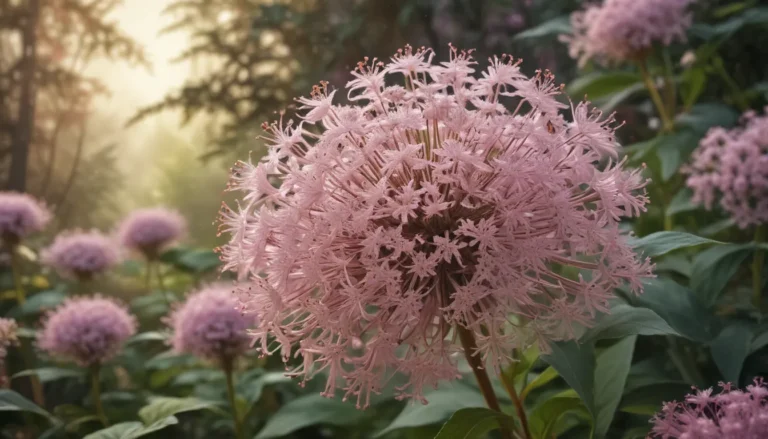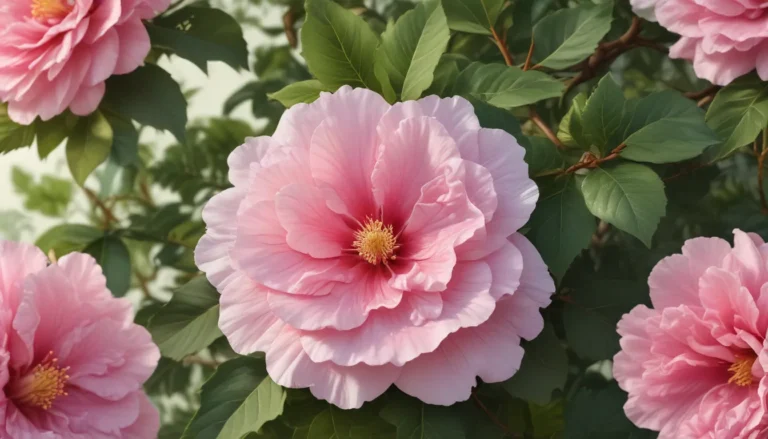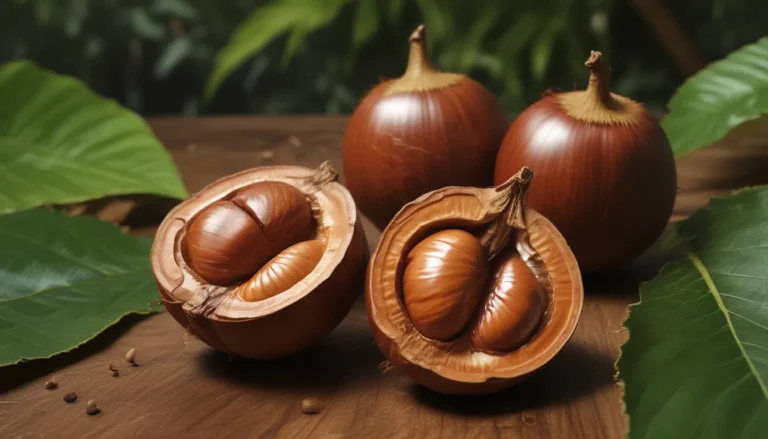The pictures we use in our articles might not show exactly what the words say. We choose these pictures to make you interested in reading more. The pictures work together with the words but don’t take their place. The words still tell you the important facts.
Mexican Sunflower, scientifically known as Tithonia diversifolia, is a striking plant native to Mexico and Central America. This vibrant species boasts eye-catching orange and yellow flowers and can grow up to an impressive height of 10 feet, making it a true standout in any garden or landscape setting. But beyond its visual appeal, Mexican Sunflower holds a plethora of extraordinary facts that make it a captivating subject of study and admiration. Join us as we delve into 10 remarkable facts about the Mexican Sunflower that will undoubtedly leave you in awe of this exceptional plant.
Unveiling the Mysteries of Mexican Sunflower
- Mexican Sunflower is not a true sunflower: Despite its name, the Mexican Sunflower is not related to the traditional sunflower we commonly associate with the Helianthus annuus species. It belongs to the Asteraceae family, commonly referred to as the daisy family.
- Native to Mexico and Central America: Originating in Mexico and Central America, the Mexican Sunflower flourishes in the warm and tropical climates of its native regions. Its popularity has led to it being cultivated as an ornamental plant in various parts of the world.
- Tall and robust growth: One of the standout features of the Mexican Sunflower is its towering height, reaching up to 10 feet under optimal growing conditions. Additionally, this vigorous plant establishes itself rapidly, showcasing impressive growth rates.
- Colorful flowers attract pollinators: Adorned with vivid orange or red flowers, the Mexican Sunflower serves as a beacon for pollinators such as bees, butterflies, and hummingbirds, enriching the biodiversity of any garden it graces.
- Versatile plant with diverse uses: Beyond its aesthetic appeal, the Mexican Sunflower boasts practical uses such as fodder for livestock from its leaves and stems, oil production from its seeds, and a history of medicinal applications in traditional folk medicine.
- Long blooming season: With a blooming period that stretches from mid-summer to late fall, the Mexican Sunflower offers an extended display of its vibrant flowers, making it a sought-after choice for gardeners seeking a striking focal point.
- Drought-tolerant characteristics: Adapted to hot and arid climates, the Mexican Sunflower showcases a remarkable tolerance for drought conditions, making it an ideal candidate for gardens in regions with limited water availability.
- Attracting beneficial insects: The Mexican Sunflower acts as a magnet for beneficial insects like ladybugs and lacewings, which play a crucial role in maintaining a balanced ecosystem by preying on common garden pests like aphids.
- Ease of cultivation: Whether starting from seeds or cuttings, the Mexican Sunflower is a forgiving plant that is relatively easy to grow. It thrives in various soil types as long as they are well-draining, making it accessible to gardeners of all levels.
- Invasive tendencies: While prized for its beauty and utility, the Mexican Sunflower can exhibit invasive behavior in certain regions due to its rapid growth and prolific seed production. Vigilance and proper management are essential to prevent uncontrolled spread.
Embracing the Allure of Mexican Sunflower
In conclusion, the Mexican Sunflower stands out as a captivating plant with its vibrant blooms, versatile nature, and adaptive qualities. Whether you admire it for its visual appeal in the garden or appreciate its multifaceted utility, this extraordinary plant is certain to impress. Consider introducing the Mexican Sunflower into your landscape to experience its exceptional beauty firsthand.
FAQs: Unraveling the Enigma of Mexican Sunflower
- Scientific name: Tithonia diversifolia is the scientific name for Mexican Sunflower.
- Height: Mexican Sunflower can reach impressive heights of 10-12 feet.
- Pollinator attraction: Mexican Sunflower attracts bees, butterflies, hummingbirds, and other pollinators with its vibrant flowers.
- Medicinal uses: Traditional medicine has utilized Mexican Sunflower for treating respiratory conditions, fever, and inflammation.
- Container cultivation: Mexican Sunflower can be grown in large containers, requiring ample space for root growth.
- Propagation: Propagate Mexican Sunflower through seeds, stem cuttings, or division of root ball.
- Invasiveness: Mexican Sunflower can exhibit invasive tendencies in certain regions, necessitating caution during planting.
- Blooming frequency: Mexican Sunflower blooms typically from late summer to fall, sometimes extending into early winter.
- Drought tolerance: While drought-tolerant once established, Mexican Sunflower benefits from regular watering for optimal growth.
- Cut flowers: Mexican Sunflower serves as an excellent cut flower suitable for floral arrangements and bouquets.
Elevate Your Garden with Mexican Sunflower
As you embark on your journey with Mexican Sunflower, remember that its allure extends far beyond its vibrant blooms and towering presence. Embrace the richness of this exceptional plant, whether for its ecological contributions, medicinal properties, or sheer visual splendor. Let Mexican Sunflower grace your garden, inviting a touch of extraordinary beauty into your outdoor sanctuary.
We take pride in curating reliable and engaging content to satisfy your thirst for knowledge. Every fact shared on our platform is contributed by individuals like you, ensuring a diverse tapestry of insights. Our dedicated team of editors meticulously reviews each submission to maintain the utmost standards of accuracy and credibility. Trust in our dedication to quality and authenticity as you navigate the wonders of the world with us. Happy exploring!






